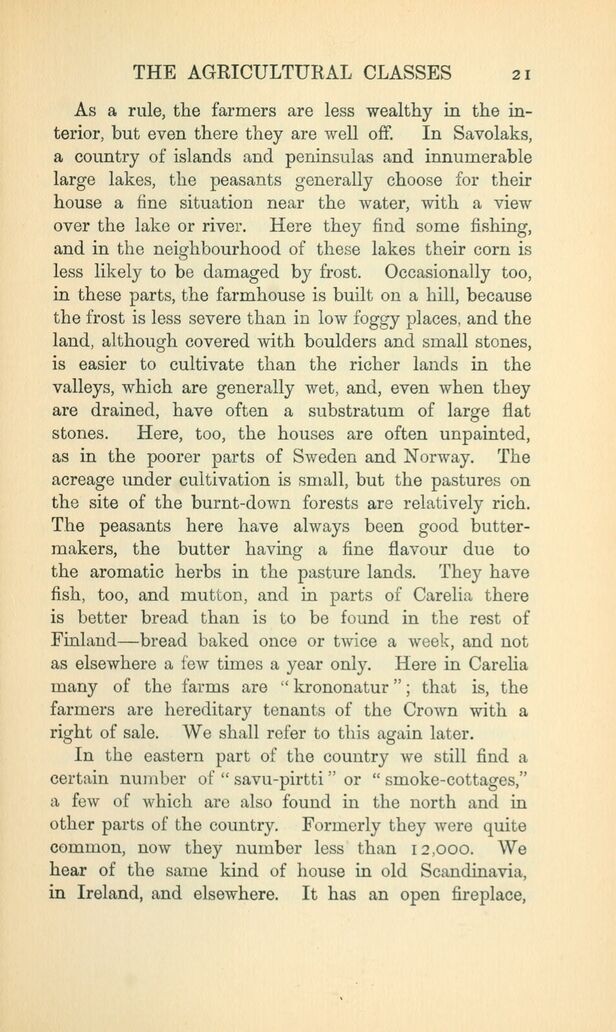
Full resolution (JPEG) - On this page / på denna sida - II. The Agricultural Classes

<< prev. page << föreg. sida << >> nästa sida >> next page >>
Below is the raw OCR text
from the above scanned image.
Do you see an error? Proofread the page now!
Här nedan syns maskintolkade texten från faksimilbilden ovan.
Ser du något fel? Korrekturläs sidan nu!
This page has been proofread at least once.
(diff)
(history)
Denna sida har korrekturlästs minst en gång.
(skillnad)
(historik)
As a rule, the farmers are less wealthy in the
interior, but even there they are well off. In Savolaks,
a country of islands and peninsulas and innumerable
large lakes, the peasants generally choose for their
house a fine situation near the water, with a view
over the lake or river. Here they find some fishing,
and in the neighbourhood of these lakes their corn is
less likely to be damaged by frost. Occasionally too,
in these parts, the farmhouse is built on a hill, because
the frost is less severe than in low foggy places, and the
land, although covered with boulders and small stones,
is easier to cultivate than the richer lands in the
valleys, which are generally wet, and, even when they
are drained, have often a substratum of large flat
stones. Here, too, the houses are often unpainted,
as in the poorer parts of Sweden and Norway. The
acreage under cultivation is small, but the pastures on
the site of the burnt-down forests are relatively rich.
The peasants here have always been good
butter-makers, the butter having a fine flavour due to
the aromatic herbs in the pasture lands. They have
fish, too, and mutton, and in parts of Carelia there
is better bread than is to be found in the rest of
Finland — bread baked once or twice a week, and not
as elsewhere a few times a year only. Here in Carelia
many of the farms are “krononatur”; that is, the
farmers are hereditary tenants of the Crown with a
right of sale. We shall refer to this again later.
In the eastern part of the country we still find a
certain number of “savu-pirtti” or “smoke-cottages,”
a few of which are also found in the north and in
other parts of the country. Formerly they were quite
common, now they number less than 12,000. We
hear of the same kind of house in old Scandinavia,
in Ireland, and elsewhere. It has an open fireplace,
<< prev. page << föreg. sida << >> nästa sida >> next page >>